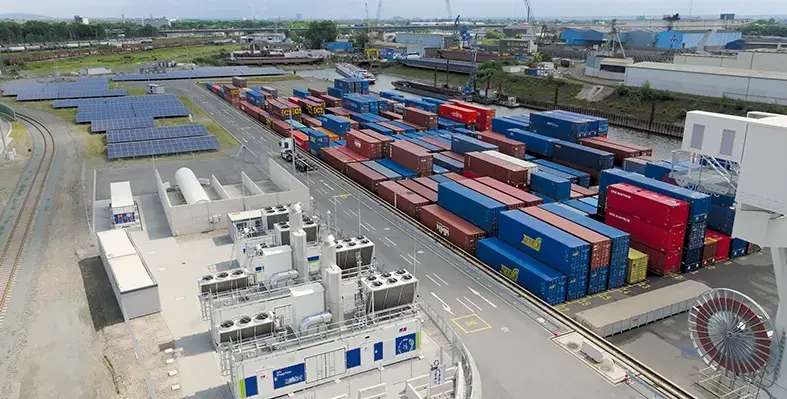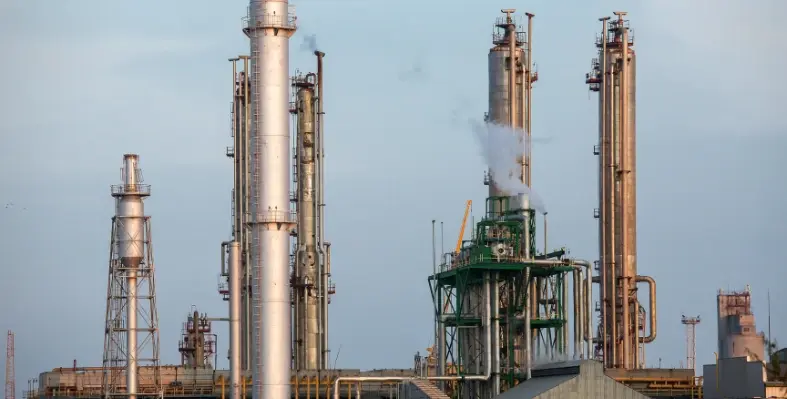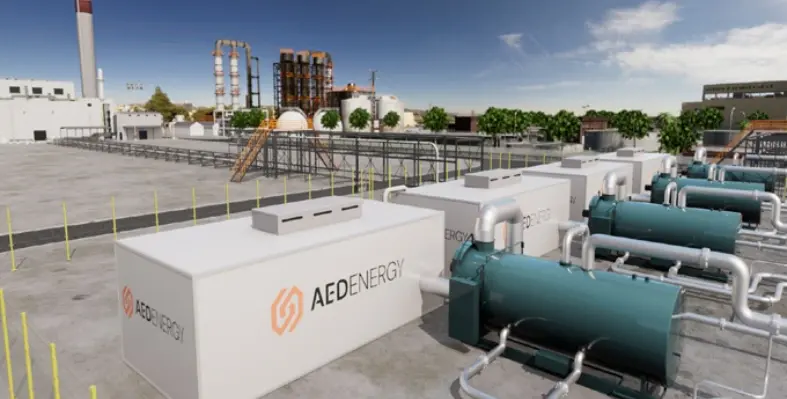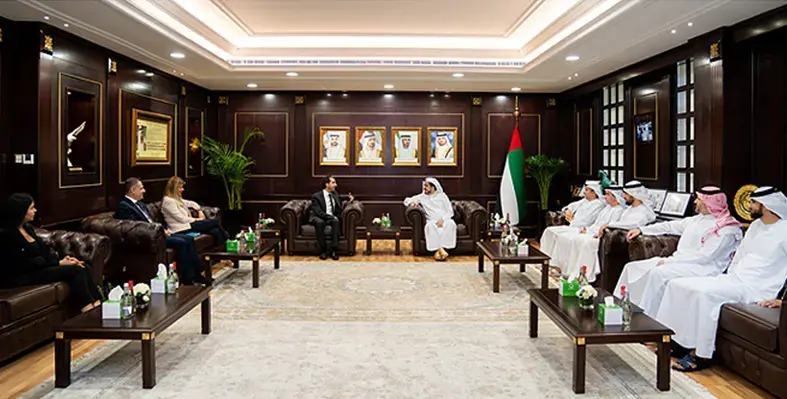
Rolls-Royce powers Duisburg Terminal with world’s first 100% hydrogen CHP energy system. (Image source: mtu solutions)
In a major milestone for sustainable infrastructure, Rolls-Royce and Duisburger Hafen AG have inaugurated a fully CO₂-neutral and self-sufficient energy system at the new Duisburg Gateway Terminal
Officially launched at the beginning of July 2025, this pioneering installation sets a new benchmark for integrated green energy solutions in logistics.
At the core of the system are two mtu combined heat and power (CHP) plants, developed for 100% hydrogen operation and deployed here for the first time globally. Supporting technologies include an mtu battery storage system, mtu hydrogen fuel cells, and a 1.3 MWp photovoltaic (PV) array — all integrated by a sophisticated energy management system.
The installation forms part of the Enerport II lighthouse project, funded by Germany’s Federal Ministry of Economics and Energy. It is seen as a blueprint for future sustainable energy systems at ports, industrial complexes, and infrastructure facilities. Project collaborators include the Fraunhofer Institute UMSICHT, Westenergie Netzservice GmbH, Netze Duisburg GmbH, Stadtwerke Duisburg AG, and Stadtwerke Duisburg Energiehandel GmbH.
Dr Jörg Stratmann, CEO of Rolls-Royce Power Systems, commented, “The opening of this CO2-neutral energy system at the Duisburg Gateway Terminal is a milestone on the way to a more climate-friendly, resilient energy supply. Together with our partner duisport, we will show how scalable technologies from Rolls-Royce can contribute concretely to the transformation of critical infrastructures and thus also to the implementation of the energy transition.”
Markus Bangen, CEO of Duisburger Hafen AG, emphasised, “Sustainability is an integral part of our corporate strategy and thus obligation to act responsibly and forward-looking. With this self-sufficient and CO2-neutral energy system, we also have a clear competitive advantage.”
Hydrogen-powered port
The intelligent microgrid provides energy for the 33-football-field-sized terminal, supplying crane systems, charging stations, and shore power. When solar output from the PV system exceeds demand, the surplus is stored in the mtu EnergyPack. In periods of low sunlight, mtu hydrogen CHP units and fuel cell systems ensure a stable, emission-free supply.
Alexander Garbar, head of corporate development at Duisport, noted,“Our microgrid runs reliably and shows that it is possible to supply such a large port terminal completely independently with green energy.”
Rolls-Royce’s involvement in the Enerport II project also marks the debut of its newly enhanced 12-cylinder mtu Series 4000 gas engines, now running on 100% hydrogen. Each engine delivers 1MW of output and demonstrates impressive performance, efficiency, and emissions results — continuing the legacy of mtu power systems.
Looking ahead, Rolls-Royce is collaborating with research centres and industry partners to develop next-generation hydrogen combustion engines capable of reaching power levels of up to 2.5MW, matching today’s larger natural gas CHP plants.
“As part of the expansion of renewable energies, the German government has decided to build further gas-fired power plants with the power plant strategy. Modular gas-fired power plants and smaller, decentralized gas engine systems can compensate for the feed of wind and solar power into the grid, which fluctuates depending on the weather, and efficiently contribute to ensuring security of supply. Rolls-Royce mtu gas engines already provide reliable power and heat supply in many places in Europe. In the UK, even a fleet of more than 500 mtu gas units supports the UK energy transition. Once sufficient availability of green hydrogen is ensured, mtu gas units such as in Duisburg can also contribute significantly to CO2 reduction with 100% hydrogen or even with a hydrogen admixture,” remarked Michael Stipa, senior vice-president of business development and product management for stationary energy solutions at Rolls-Royce.
The project showcases how advanced hydrogen-ready technologies, combined with intelligent systems and public-private collaboration, can power industrial progress while supporting global climate goals.
Also read: Transforming utilities: DEWA’s digital roadmap with Microsoft










